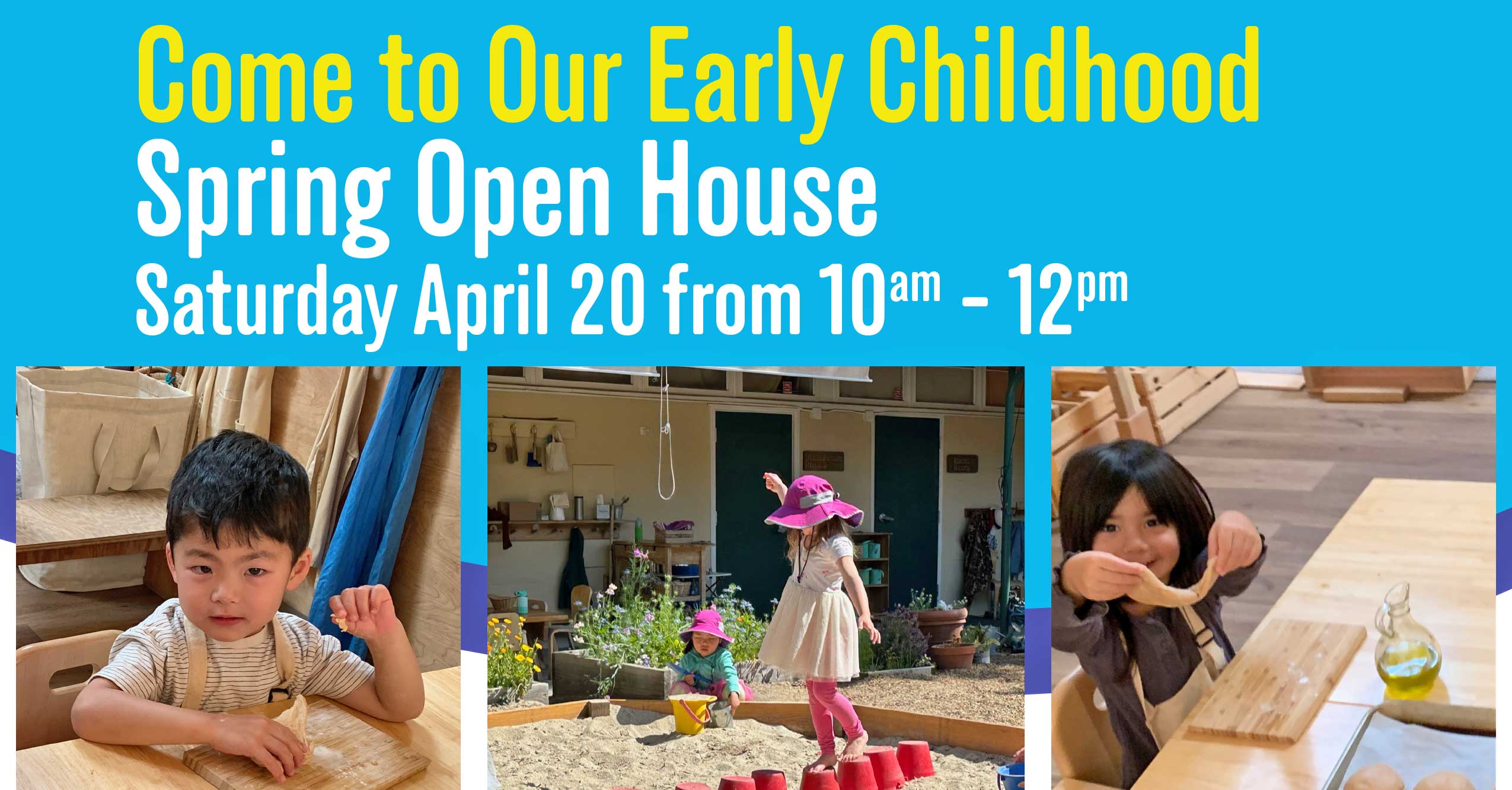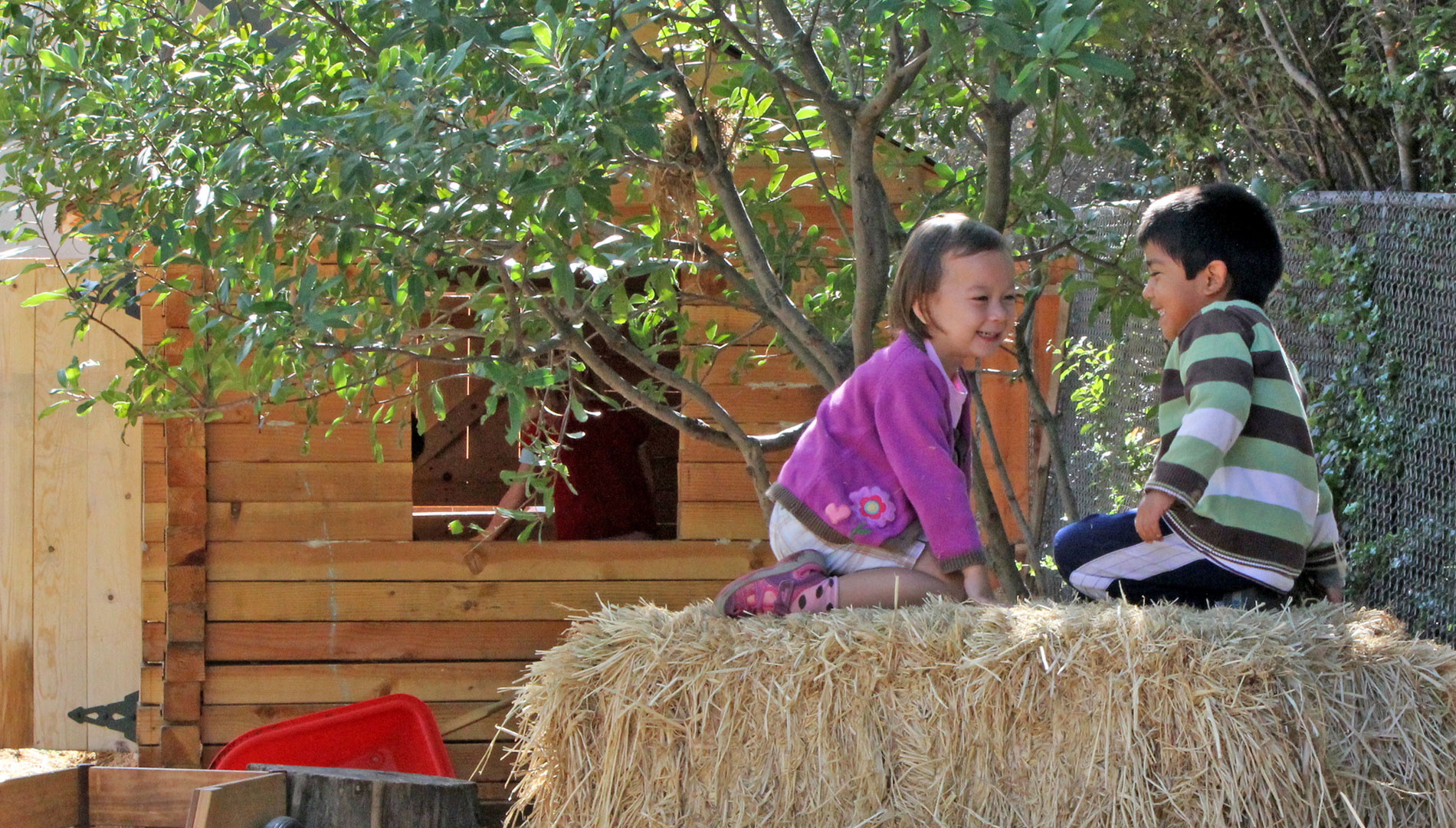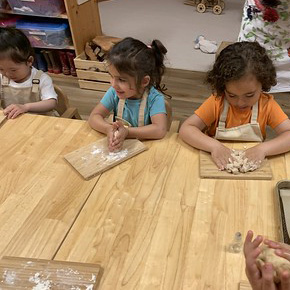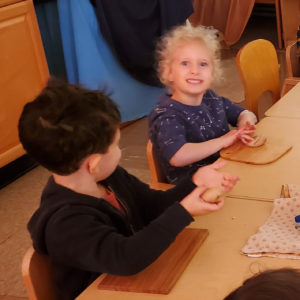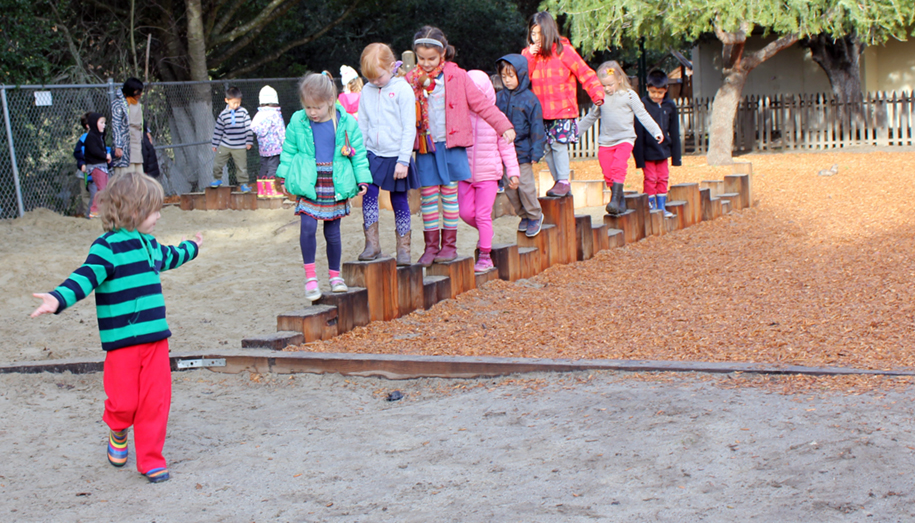
Sunflower Kindergarten Recipes
Teacher Meeta has been our Sunflower Kindergarten Assistant for several years. Though she is now teaching the grades 1-5 movement classes (also known as “games”) , she generously shared her treasure trove of tried-and-true kindergarten recipes for us to try at home this summer! While some of our youngest students enjoy these recipes, many of us can attest that adults and those in-between will also enjoy them.
Here is a printable pdf version.
Sunflower Kindergarten Recipes
Monday: Rice with Gomasio
- 4 cups brown rice (may soak for 24 hours in advance)
- 8 cups water
- 1 teaspoon salt
- olive oil or 1 stick butter
- optional:
- tamari or soy sauce
- sesame seeds
- salt
- (optionally add: carrot, peas, corn)
Boil water, add rice and after it comes to a boil, turn down to medium heat. Cook for 20 minutes. Add salt (can add the veggies as well if needed.) Cover and cook on low heat for another 30 minutes, or until desired texture. Drizzle olive oil before serving.
Can serve with tamari/soy sauce, and sesame seeds gomasio –
To prepare Gomasio – in a mortar pestle – crush sesame seeds with a little salt.
In the Instant Pot:
- Put all ingredients into the instant pot. Make sure the steam release valve is at seal position and use the Porridge setting. Preset Porridge setting: 20 minutes cooking time, low pressure and normal setting.
- Turn the instant pot off after 20 minutes to stop the cooking.
- Rice will keep warm in the instant pot until ready to serve.
Tuesday: Oatmeal
- 4 cups oats
- 10 cups water
- 1 cup coconut cream or coconut milk (can substitute this for a cup of water)
- pinch of salt
- Vanilla
- Cinnamon
- butter
- 1 cup raisins
- 1/4 cup honey or maple syrup
Boil water (can add coconut cream or milk if preferred.) Add oats and bring to a boil. Reduce to medium heat. Add salt. Cover and cook on low heat for another 30 minutes or until it reaches the desired consistency. Add honey or syrup and serve.
(Raisins on the side, crushed almonds on the side)
In the Instant Pot:
- Pour all ingredients except raisins and maple syrup into the instant pot. Make sure the steam release valve is at seal position and use the Porridge setting. Preset Porridge setting: 20 minutes cooking time, low pressure and normal setting.
- Turn off the instant pot when it goes to keep warm setting or when you come back to the classroom.
- Open the instant pot when it opens naturally, don’t try to force open it. Add maple syrup and mix well with a whisk to remove lumps. Let it sit for 5-10 mins ( can close the lid if you wish).
- Oatmeal will keep warm in the instant pot until ready to serve.
Wednesday: Bread with honey-butter or sunflower seed butter
- 2 cups warm water
- 1/2 tablespoon yeast
- 1/4 cup honey
- 1/2 teaspoon salt
- 3 cups wheat flour
- 3 cups whole wheat flour
Mix flour, salt, put aside. Add warm water to a large mixing bowl. Dissolve honey in it. Sprinkle the yeast. Let it rest to bubble and ferment for 10-15 minutes in a warm spot. Add the flour mixture to the bubbling water. Mix, then knead until the dough comes together and is not sticky anymore. Let rest and rise for 30 minutes – 1 hour. Portion the dough. Knead and shape into fist-sized rolls. Bake at 350 degrees F for 25 minutes or until golden brown. Can be served with butter, honey, nut or seed butter.
Honey butter per table
- 2 stick unsalted butter
- ¼ cup of honey. (adjust per taste)
Mix room temperature butter with honey and serve with warm bread. I prefer to melt butter in the microwave and then add honey to it and let it sit. Mix well before serving
Sunflower butter
- 1/4 cup of sunflower seed butter per table
Thursday: Vegetable soup
- Olive oil to coat the pan or stick of butter
- 1 large onion optional
- Garlic and ginger minced optional
- assorted vegetables and herbs
- 1 jar of marinara sauce
- salt
On the stovetop:
- Chop all veggies and herbs (some with the children in the morning).
- Coat a heavy pot with olive oil and heat it on medium heat. Add chopped onions (and garlic)
- Add all vegetables as and when it is chopped
- Add water, salt , and marinara sauce. Let it come to a boil on high heat, then turn the heat down, cover and let it simmer for 30 minutes.
- Add any chopped greens, herbs and chopped tomatoes. Let simmer for another 15-20 minutes.
In the Instant Pot:
- Chop all the vegetables into bite size pieces (some with the children).
- Pour oil on the bottom of the pot and use the Saute function on the instant pot to saute onion and carrots.
- Saute the chopped vegetables in the oil for a couple of minutes.
- Add water to cover vegetables.
- Make sure the steam release valve is at seal position. Use the Soup/Broth function on the instant pot. Preset Soup/Broth setting: 30 minutes cooking time, high pressure, and normal setting.
- Soup will keep warm in the instant pot until ready to serve.
Friday: Muffins
Ingredients:
- 3 c spelt flour or whole wheat flour or half and half with whole wheat and white flour
- 3 cups millet flour
- 4 tsp baking powder
- 1.5 tsp salt
- 3 tsp cinnamon
- ¾ cup honey or maple syrup
- 27 oz almond milk or coconut milk about 4 cups
- 1.5 tsp vanilla
- ¾ cup melted butter
- ½ cup of olive oil
Directions:
- Mix dry ingredients
- Mix wet ingredients
- Mix together
- Grease tins with oil
- Spoon into tins, bake 15 mins for small, 25 for big at 350F
- Once out of the oven, leave them for a bit before removing from the pan
Birthday Cake
- 3 cups of flour
- 4 tsp baking powder
- 3 tsp of cinnamon
- 1 cup maple syrup
- ¾ cup melted butter or 1.5 stick butter
- 1 ½ cup of milk
- 3 eggs
- Vanilla 2 TBSP
- Salt
Mix all ingredients and pour in well oiled pan
For children to bake the cake:
- 1 big bowl with – flour, baking powder and cinnamon
- In separate bowls keep – eggs, milk, butter and maple syrup+ vanilla
- Have children mix this at the table.
When thoroughly mixed, make sure to not overbeat it but if there are no lumps, pour it in the prepared tin to bake.
55 mins at 350 F on the lower rack.

